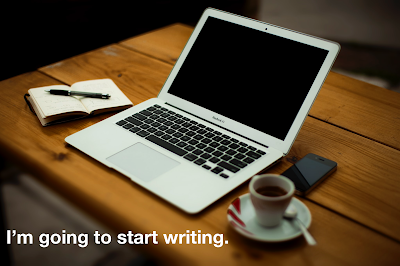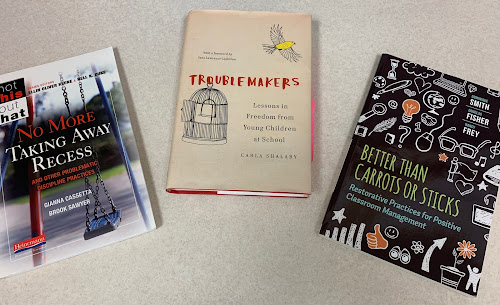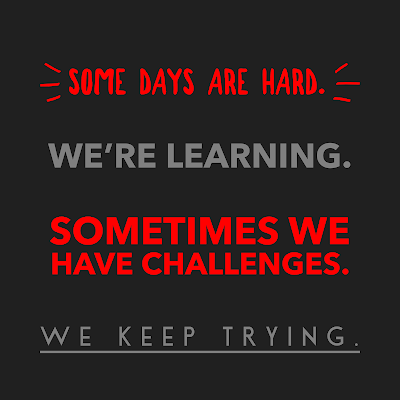As a form of communication, email as we know it has been around since the early part of the 1970s. Its popularity skyrocketed during my childhood in the mid 1990s, and it's usage has never looked back. Currently, according to
Radicati, the number of active email users is approximately 3.9 billion. And those 3.9 billion emailers are sending over 245 billion emails, each day. That equates to the average American worker receiving an average of 126 emails per day. Wow!
"Email Usage Statistics in 2019."
Campaign Monitor, July 11, 2019,
https://www.campaignmonitor.com/blog/email-marketing/2019/07/email-usage-statistics-in-2019/.
I am willing to admit that the inbox of my email can cause me anxiety. And I'm guessing that I'm not the only one. I'd imagine that other people dread their inbox the same way that I do. So while this post may seem to be one about email, it is really about mindfulness and self-care.
So how can we navigate through our emails? This is the first of two posts that I've written to share my musings about email. I have some ideas and tips to share will hopefully will help anyone who has to both send and receive emails.
I want to start with a passage from Ryan Holiday's book, The Daily Stoic: 366 Meditations on Wisdom, Perseverance, and the Art of Living.
“We check our email because it’s part of our job, and soon enough we feel the phantom buzz of the phone in our pocket every few seconds. Soon enough, these harmless habits are running our lives.” p.16
Who can relate to those words? I do. And as much as I love Apple and all of the products that they create, I feel as though they (and the other companies that make similar products) are at least partly to blame for allowing email to run our lives. I have an iPhone, I wear an Apple watch, I'm always accessible.
Nonetheless, I've done things to shield myself from this reality. A game changing conversation at the National Principals Conference in Philadelphia, 2017 (with friends Danny Bauer, Hamish Brewer, Andy Jacks, Nick Proud and Todd Schmidt) about strategies to employ such as turning-off notifications on your phone, putting your phone on airplane mode, and hiding apps within folders to name a few. These are things that we need to do for our own mental wellness.
I remember being a first year principal and how great it was to be given an iPad that I could take with me as I maneuvered through the school. Two birds and one stone. I was able to do the work that mattered, be in classrooms visiting with students and teachers, while having access to receiving and responding to email as it arrived. Inbox Zero was always my goal. But there's a problem with striving for Inbox Zero; as soon as you get you reach Inbox Zero it is only a matter of time before you will receive a new email. Email never stops (more on that in a couple of paragraphs).
I've changed in the sense that I've had to become okay without striving for Inbox Zero. I now try to carve-out time that I can read and respond to emails. While some emails only need a simple response, others require a more thoughtful reply;
I'd rather respond well than respond quickly. As a general rule, I
try to respond to email within 24 hours. And just because email is easier, or at least more convenient, it doesn't meant that it's the best form of communication. If/when possible, talk to the person; always.
So email never stops. Okay, true. But as individuals, we can slow it down. While I may draft emails and responses to emails at night and over the weekend, I try to refrain from sending emails during those times; I want to
be respectful of people's time for self, family, and friends.
As I start to wrap this up, I'll share another quote from Ryan Holiday, this time from his book
Stillness is the Key.
“As a general, Napoleon made it his habit to delay responding to the mail. His secretary was instructed to wait three weeks before opening any correspondence. When he finally did hear what was in a letter, Napoleon loved to note how many supposedly “important” issues had simply resolved themselves and no longer required a reply.
He had to be selective about who and what kind of information got access to his brain.” p.30
I wrote the following words for a previous post that I shared via
NAESP's Principal magazine, but I'll remind you, "A mentor once told me that there is rarely an educational emergency."
You shouldn't expect email to be instantaneous, it isn't going anywhere.
I hope that at least some of this resonates with you. While the majority of this post centers around receiving email, I'll focus on some tips and tricks for sending email in the follow-up that I have drafted. And since you've made it this far with this first post, I hope that you'll consider coming back to read the next one.

























